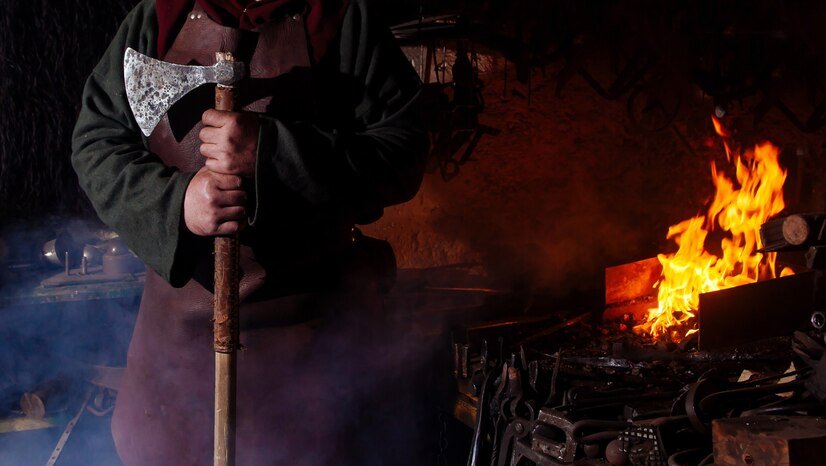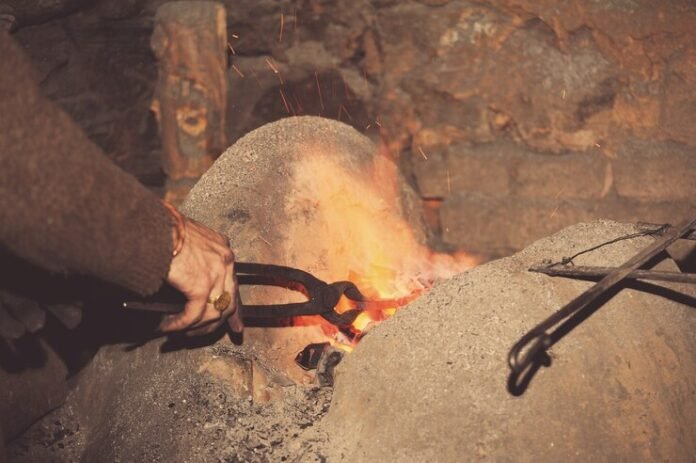The term “iron flame” evokes an incredible sense of history, depth, and mystery. For centuries, this intriguing artifact has captured the imagination of people from various walks of life. From its origins steeped in folklore and warfare to its ongoing cultural significance today, the Iron Flame holds a story worth telling.
Whether you’ve stumbled upon the concept for the first time or you’re already fascinated by its storied past, this blog will take you on a deep-dive into the legacy of Iron Flame. Here’s what we’ll explore today:
- The origins of the iron flame.
- Its historical and cultural significance through warfare and tradition.
- The resurgence and modern-day impact of Iron Flame.
- Where you can find notable Iron Flame artifacts and even learn how to recreate one yourself!
Prepare to uncover the unique allure of the Iron Flame and its enduring legacy, one spark at a time.
The Origins of the Iron Flame
To fully appreciate the significance of the Iron Flame, we must first examine its origins. While the exact roots of the Iron Flame are debated, historical records trace its presence back to medieval Europe, particularly during the age of knightly conflicts and artisan blacksmithing.
“Iron Flame” refers to both a ceremonial ritual and the physical creation of weaponry, merging metallurgy with artistic reverence. The method involved heating iron to glowing-hot temperatures and forging it into symbolic shapes—often swords, daggers, or helms. During key milestones—like coronations, wars, or territorial agreements—artisans and warriors would engage in heating iron over roaring flames, symbolizing purification and resurrection.
Historians theorize that the vibrant orange and white hues of heated iron started to take on an almost spiritual meaning, representing raw power controlled by expert craftsmanship. It also signals resilience, endurance, and protection—the early virtues that societies deeply admired.
The Historical Significance of Iron Flame in Warfare and Culture
The didn’t just provide materials for war; it became a symbol of enduring strength and unity among knights, peasants, and warriors alike. The process of forging and blessing weapons with open flames is prominently chronicled in medieval literature.
Warfare
The played a pivotal role in armament preparation during feudal wars. Knightly orders often burned their symbols or insignias into scabbards and armor using branding techniques inspired by the flame. This wasn’t just functional—it was deeply symbolic. Carrying an weapon into battle provided not only physical protection but also spiritual assurance that victory was possible.
Culture and Rituals
Away from physical warfare, forging iron objects through the flame evolved into a communal endeavor. For communities, the Iron Flame ceremony became a way to mark major life transitions—marriage, childbirth, or even offerings to local deities—through the forging of rings, tools, or sacred objects.
The reverence for this craft extended to mythologies too. Norse sagas, for instance, highlight smiths who worked tirelessly under for days to create swords blessed by gods. These stories helped solidify the idea of fire and iron working together as tools for transformation.

Iron Flame in Modern Times: Revivals and Cultural Impact
Fast forward to the 21st century, and you may wonder if this ancient practice still holds weight. The answer lies in its modern revival. Today, Iron Flame has found a deep connection with enthusiasts interested in historical recreation.
Historical Reenactments: Across Europe and the United States, history buffs and artisans gather for medieval fairs where iron flame demonstrations captivate crowds. Think blacksmiths hammering away in fiery workshops, recreating techniques that have endured for centuries!
Pop Culture Influence: The continues to show up in games, movies, and literature. Iconic fantasy novels and films, such as The Lord of the Rings or Game of Thrones, showcase blacksmithing rituals, often romanticizing both the physical and mystical roles of fire-forged weapons.
Craftsmanship Renaissance: Amidst today’s “return to the craft” movement, more people, including young hobbyists, are exploring artisan blacksmithing. They seek to replicate traditional methods while blending modern designs—making everything from replica swords to jewelry.
The serves as a bridge between cultural nostalgia and contemporary creativity, ensuring its legend remains alive.
Notable Iron Flame Artifacts and Where to Find Them
For those intrigued by uncovering artifacts, there’s no better time to immerse yourself. Across museums and historical sites, you can find relics preserved through centuries. Here are a few must-visit destinations for history buffs:
- The British Museum, London: Home to ceremonial swords featuring ancient forging techniques influenced by Iron Flame rituals.
- The Armoury Chamber, Moscow: This fascinating collection includes armor and weapons believed to have undergone sacred forging ceremonies.
- The Smithsonian National Museum of American History, Washington, D.C.: Featuring phenomenal blacksmith collections from the 19th and 20th centuries.
- Open-Air Blacksmith Villages: Places like Denmark’s Ribe Viking Center or Germany’s Mittelalterfest host live demonstrations about traditional blacksmithing.
Interested in private collections? Modern artisans on platforms like Etsy or Instagram often sell historically inspired Iron Flame creations.
Crafting Your Own Iron Flame
Eager to try creating your own-inspired object? Be warned—blacksmithing is an art that takes patience and craftsmanship! Here’s a simplified process to get you started safely:
- Choose a Project: Select something simple to begin with—perhaps a small pendant or ring.
- Gather Tools: You’ll need a forge, hammer, tongs, an anvil, and heat-resistant gloves (safety first!).
- Heat the Iron: Heat your raw metal in a forge or gas-powered furnace until it glows bright orange.
- Forge with Care: Gently hammer the metal into your desired shape while it’s hot and pliable. Repeat reheating if necessary.
- Polish & Finish: Cool the finished shape in water, polish it with fine-grit sandpaper, and apply wax for added durability.
For aspiring smiths, signing up for a beginner blacksmithing workshop can be an enriching experience. Such classes are offered globally and designed to help you recreate this timeless craft.
The Ever-Burning Legacy of the Iron Flame
The isn’t just about the physical act of forging metal; it’s a testament to how craft and culture intertwine, shaping history and inspiring modern creators. From its origins in medieval warfare to its sparks lighting up movies and reenactments today, the demonstrates how even the simplest elements—fire, metal, and creativity—can create something extraordinary.


